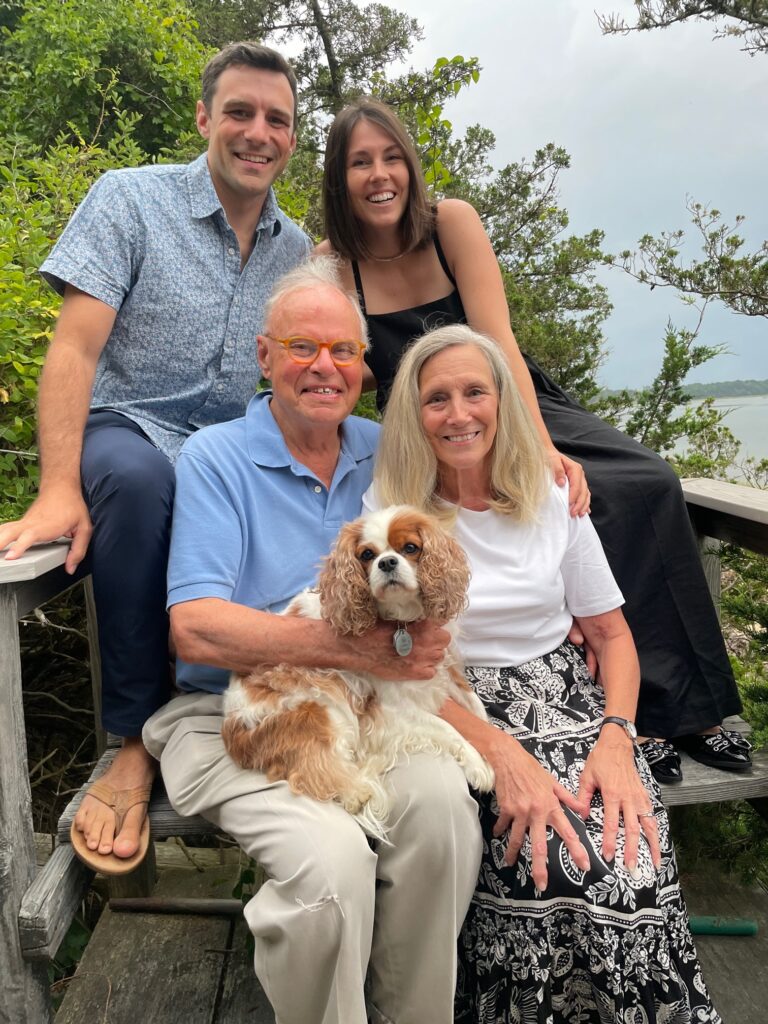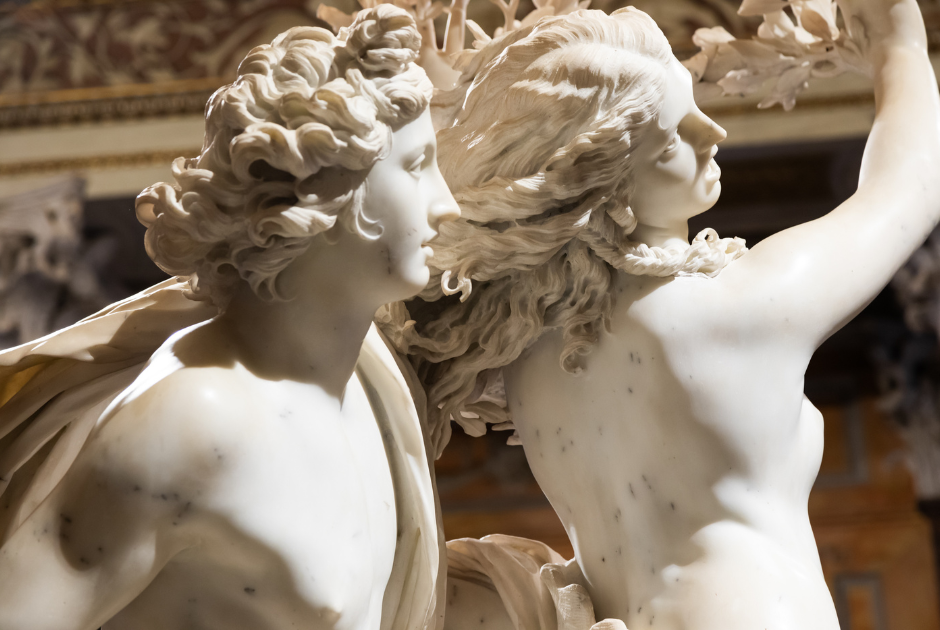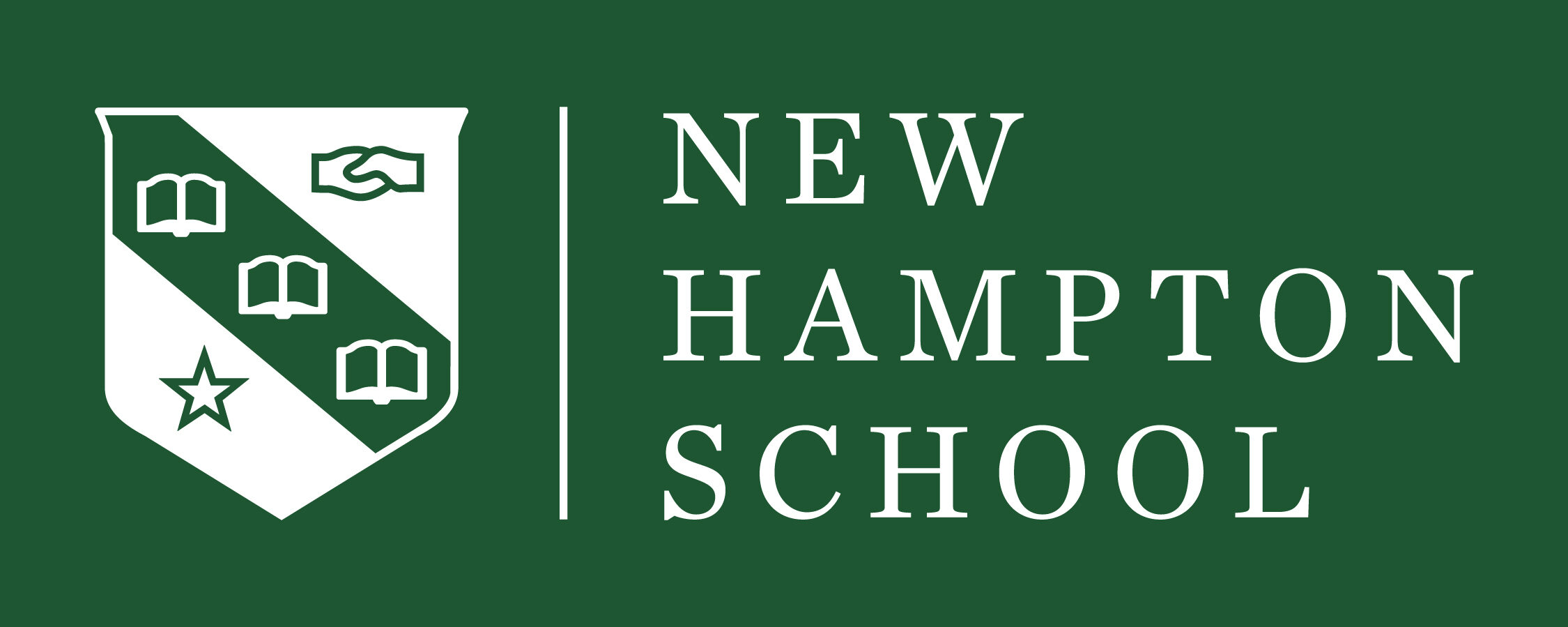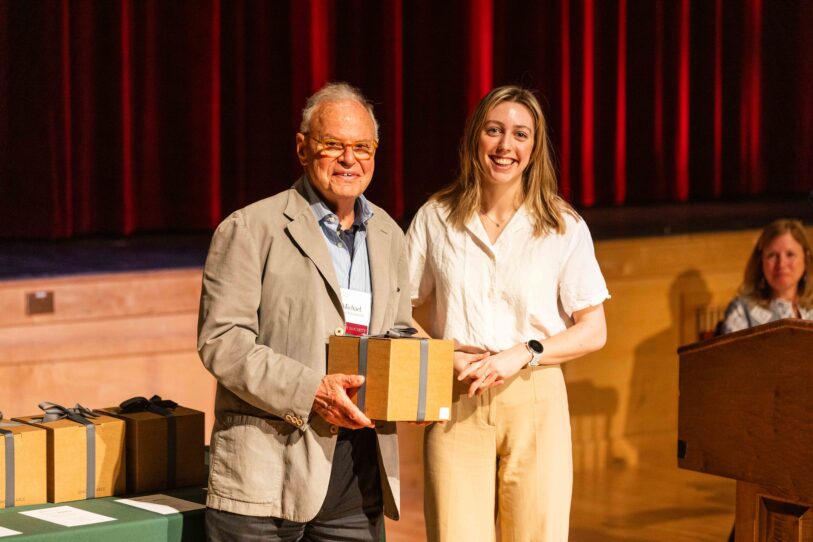A long-time trustee of the American Academy in Rome, Michael Conforti is a consultant to arts organizations and teaches in the Williams College Graduate Program in the History of Art. For his extraordinary achievements in the art and museum world, he was honored at Reunion 2024 with one of the inaugural New Hampton School Alumni Association Awards.
We wanted to ask Conforti at least eighty questions about his life and his work, but we settled for eight:

How did you first become interested in art?
Shortly after I arrived at New Hampton I was asked what career I might want to pursue. I remember responding “working in an art gallery or museum” not really knowing what that meant at the time. I followed that interest (where it came from I don’t know) by requesting an internship at the Addison Gallery in Andover, Massachusetts, when I was 16 or 17. The Addison Director brought me into his office and listened to me intently even though an internship never materialized. Taking my inquiry so seriously made a great impression on me as did the Addison’s galleries of American painting – the Winslow Homers especially. It seems to have confirmed my earlier intuition, expressed when I arrived at New Hampton, as to what I wanted to do in life.

When did you know you would pursue it as a career?
I got a job at Sotheby’s in London shortly after I graduated from college. After a year and a half there, I was transferred to New York where I eventually oversaw their new training program (which has now evolved into the “Sotheby’s Institute”). At the age of 26, I decided to go to graduate school. That began my not-for-profit involvement with art which eventually led to museum work.
What art history class should everyone take?
There’s a current tendency for art history departments in colleges and universities to eliminate the general “survey” courses (ancient Egypt to contemporary art) encouraging students to take ones focused on specific periods and cultures. I think this is unfortunate for those who will never pursue a major in art history or a career in the field but who are still interested in learning more about art. Broad survey courses are an ideal foundation for anyone whose later art engagement might only be occasional visits to an art museum. Anyone interested in art, however casual their interest, should try to seek such a course whether in college or after – or even in high school if they offer it – some do.
Many people think of art museums simply as places that house art. How do you view museums?
Museums have traditionally been “social sites for aesthetic encounter” and that value still holds true for the vast number of institutional visitors. Today, however, the terms “social” and “aesthetic” have been expanded, if not altered, by museum professionals to address the politics, the identity issues and the culturally relative perspectives of our time. Visiting a museum today can be an educational, and intellectual experience as well as an enjoyable one. Offering single artist or theme-based exhibitions, often enhanced by loans from private or public collections (in addition to the museum’s own collection held in trust for the public), museums are not only active and engaging public spaces, but sites where “slow looking” at the artistic achievements of the past and present remain central to its purpose and the visitor’s experience.

Do you have a favorite artist or a favorite piece of art?
If I had to pick one favorite work of art it would be Gian Lorenzo Bernini’s sculpture “Apollo and Daphne” in the Galleria Borghese in Rome, a breathtaking tour-de-force of “live action” in carved marble. If you asked me which works of art in a gallery give me the most pleasure, however, it would be a gallery of American paintings of the late nineteenth and early twentieth century. It’s in such galleries where I began my interest in art and they continue to be the galleries I’m most drawn to when visiting a museum.
Is there a museum you’d like to see that you haven’t yet visited?
I haven’t seen the recently opened M+ in Hong Kong and would like to. I also haven’t visited many of the museums in Africa, some of which are very new, including the about-to-fully-inaugurated Grand Egyptian museum in Cairo and the museum in Dakar in Senegal which opened a few years ago. Maybe one day I’ll be able to visit the Museum of West African Art currently being built in Benin City.
Which is the best city in the world for visiting museums?
I’d name a few and for different reasons. London – due to the centuries of institutional collecting in Britain (amazing diversity and holdings); Paris – given the primacy of art in French culture (accompanied, as Paris is, by the most engaged exhibition-going public anywhere with many exhibitions regularly on view); Rome – for its extraordinary church commissions and archeological material. The Prado in Madrid has the best painting collection. The Hermitage in St. Petersburg is, for me, the most astonishing and ever surprising. Louisiana, overlooking the Baltic Sea a few miles north of Copenhagen, is the most pleasant museum-going experience I know – an art-in-nature complex of old and modern buildings with well-curated exhibitions of contemporary art in each of its many above and below-grade galleries.
Can you share some advice for a young person interested in art history and the world of museums?
If you’re passionate about pursuing an interest in art history and museums, don’t listen to your parents who will try to discourage you. I say this in spite of the fact that your parents’ discouragement is fully justified given the challenges you will face.
Passion (and it needs to be passion – not just a casual interest) is necessary to sustain you as you take innumerable courses in undergraduate and graduate school, pursue a master’s thesis, or, sometimes, a Ph.D. dissertation. All that work will then be followed by numerous letters of rejection when you seek employment in the very tight job market for museum and academic positions – and this is also true for jobs in the commercial art world. In addition, if and when you are successful, success will be accompanied by relatively modest financial reward – and this is also true for lower and middle-level positions in the commercial world.
If your passion is strong enough and you are willing to work hard and be patient as you proceed from education to a position in the field, you will be rewarded by the extraordinary benefit of linking your work life to your content interest. That’s a special gift, one which will sustain you in life far more than any alternative path you might have pursued if you had sought a career for financial security alone.
More About Michael Conforti ’64
In addition to his consulting and teaching work, Conforti remains a member of the Executive Committee of The Amon Carter Museum of American Art in Ft. Worth and also serves on the Board of the Canadian Centre for Architecture, Montreal and the (Philip) Guston Foundation. He is the museum advisor to the Aspen Institute’s Artist Endowed Foundation Initiative and is a member of the Scientific Committee of the Scuderie al Quirinale, Rome.
Conforti was president of the Association of Art Museum Directors from 2008-10 and until recently was on the Board of Houston’s Menil Collection, Houston. He has been a member (meetings now suspended) of the International Advisory Council for the Hermitage in St. Petersburg, the Zentral Kustodie of the University of Göttingen, and is a trustee emeritus of the Massachusetts Museum of Contemporary Art (MASSMoCA). Director of the Clark Art Institute from 1994-15, he oversaw the expansion of the Clark’s facilities by Tadao Ando completed in 2014.
Conforti was a Fellow at the American Academy in Rome (1975–77) and a Resident in 2008, was its Louis I. Kahn Resident in Art History (2007) and also served as on its Executive Committee (2001–2013). He was an Andrew Mellon Visiting Scholar at the Center for Advanced Study in the Visual Arts at the National Gallery of Art (1993) and a Guest Scholar at the Getty in 1988 and 2016. In 1987, he received the Robert C. Smith Award for the most distinguished article in the field of decorative arts, and, in 1989, the Charles F. Montgomery Prize in that field. The Swedish government awarded him the Order of the Polar Star in 1988. He received an Honorary Doctorate from Trinity College in 2016 and from the Massachusetts College of the Liberal Arts in 2014. He is a former trustee of ICOM US (International Council on Museums) and was on the CIHA (Comité International d’histoire de l’art) National Committee for the History of Art from 2000–12. He is a regular lecturer and author of articles on sculpture and the decorative arts, institutional and private collecting in their social and cultural contexts, the history of museums as well as current and future issues in program, ethics and practice facing art museums today.
A 1968 graduate of Trinity College in Hartford, Connecticut, Conforti began his career at Sotheby’s in London, starting a training program for Sotheby’s in New York in 1970. He subsequently received an MA (1975) and PhD (1977) in art history from Harvard University. Prior to his tenure at the Clark, he served as Chief Curator and Bell Memorial Curator of Decorative Arts and Sculpture at the Minneapolis Institute of Art (1980–1994). From 1977 to 1980, he was Curator of Sculpture and Decorative Arts at the Fine Arts Museums of San Francisco.
The Alumni Association Awards were created to recognize and honor those alumni who have been a credit to the education provided to them by New Hampton School and are living a life representative of its mission. Awards will be given for outstanding community service; exemplary academic, intellectual, or creative achievement; and/or distinction in an alumnus/a’s professional or vocational field. For more information, or to nominate someone, please visit the School’s online alumni platform, Husky Hub.





Good for Michael and congrats!
Michael was then and believe still a great guy. Congrats Michael!🍻
A remarkable life of achievement in a very competitive field of endeavor, matched only by Michael's warmth and compassion.
Well done, Mike! Fantastic work and life. Best wishes. Keep up the great work. (BTW, we may have a mutual connection in Hope Alswang.)
Michael, just thought about you and Licia. Hope all is well and life in Palleggio too. Miss both of you in many ways. Hugs from me and Ana.
I know Mr. Conforti because When I lived in New England I gave him Italian language lessons. I had the privilege to go to his beautiful home in Williams Town when he was still the CEO of the Clark Institute. I immediately noticed the incredible intelligence and will to learn. After many years I came back to live in Italy (Milan area) and I was able to reconnect with him by asking the Clark Museum if I could have his email address. Now we talk in Italian once a week via videocall (What's Up) and it is always a pleasure to talk to him and to see how active he still is. He travels a lot and on two occasions I had the chance to see him and his lovely wife in Italy. I am so glad I met such an extraordinary man and I hope we will continue to chat in Italian once a week for half an hour. Michael has a splendid heart and he never shows off the achievements that he was able to achieve!!! Next lesson this time in two weeks on the 7th of March he will talk to me in Italian about Barocco times. I am looking forward to listening to him talking in Italian about a deep study of Barocco he did while at Harvard!! Kind Regards, Claudia Sacchi